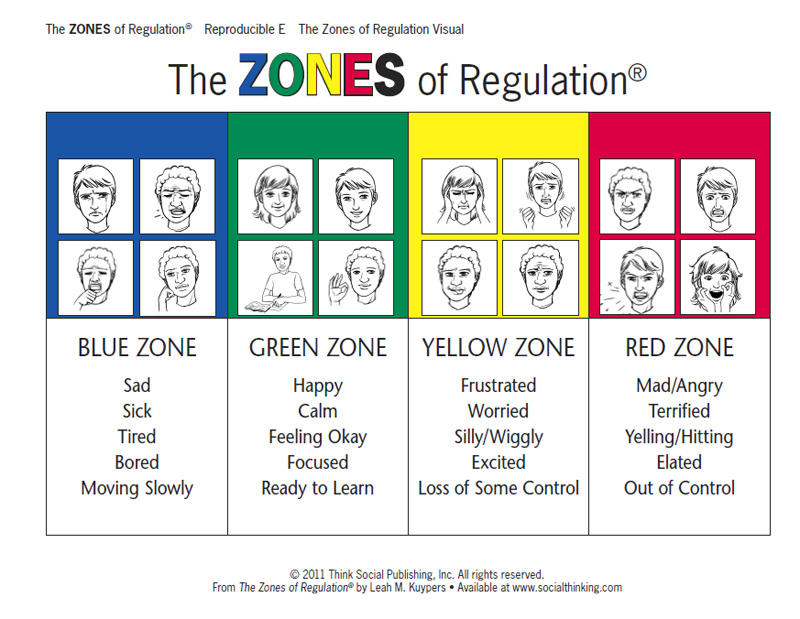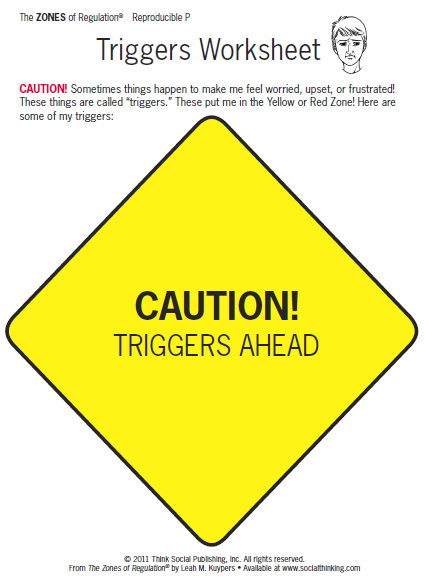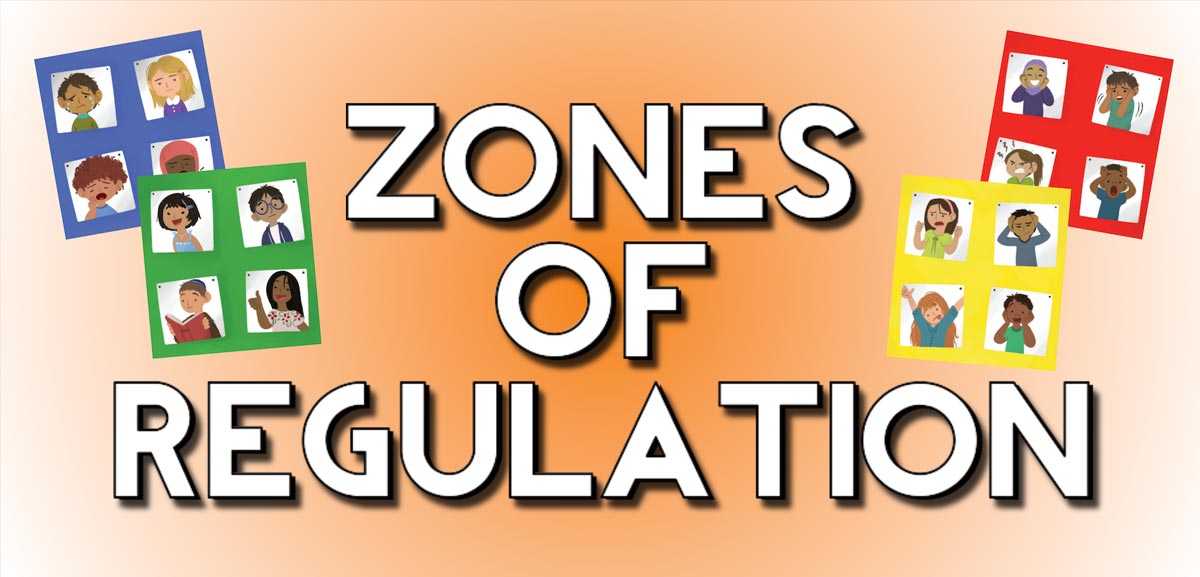Zones of Regulation
This year, Aaron School students have been busy learning about the Zones of Regulation curriculum! This program, written and created by Leah M. Kuypers, MA Ed. OTR/L, uses a multi-disciplinary approach to teach children self-regulation skills. Self-regulation refers to a child’s ability to identify and positively manage their physical energy level and emotional state so they can remain calm. The related service departments (speech-language therapy, occupational therapy, and counseling) have worked together to implement this program throughout Aaron School classrooms this year. Elements of the curriculum are utilized during whole group instruction and/or in therapy sessions, depending on a student’s developmental level and individual needs.
The program is centered on four zones, each representing a different emotional state or arousal level. The blue zone is when your body is running on slow, such as when you are tired, sick, sad, or bored. The green zone is when you’re ready to listen and learn. You may feel happy, calm, and focused. The yellow zone describes when you start to lose control, such as when you’re frustrated, overwhelmed, silly, excited, worried, anxious, or surprised. It is a good idea to use caution when you are in the yellow zone and use a strategy to get calm. The red zone is reserved for extreme emotions such as terror, uncontrolled anger, aggression, and elation. When you’re in the red zone, you are out of control, and have trouble making good decisions. Aaron School students are using these Zones to learn and implement important social-emotional, self-regulation, and communication skills.

Students are introduced to the Zones program at an early age by focusing on feelings-identification and simple self-regulation strategies. Our kindergarten and first grade are utilizing the curriculum to strengthen their understanding of feelings vocabulary. Instead of simply happy, sad, and mad, students are learning more advanced and subtle concepts, such as frustrated, confused, surprised, or worried. As students get older, they may begin to learn simple strategies to help them move from one zone to another. For example, a student learns that when they are worried in the yellow zone, they can take deep breaths to get calm. Or a student that is tired in the blue zone will learn to do a movement break to get their energy level up.
Our upper elementary and middle school students build on this knowledge by using the Zones curriculum to broaden their understanding of how to navigate tricky social situations and become more self-aware. Students learn about specific triggers that send them into another zone. For example, a student may learn that beginning a new topic in math is a yellow zone trigger that causes them to feel worried. They may choose to use positive self-talk or another calming strategy when they know this trigger is approaching. Our middle schoolers are learning about how our understanding of these Zones can influence the way we interact with others. They will learn to make note of their friends’ triggers, so they can avoid topics that might make a friend upset. Similarly, they also focus on analyzing how changes in their zone can affect others (cause and effect). A child who starts giggling in the yellow zone may in turn cause another student to go into the yellow zone when they become frustrated by the extra noise in the classroom.

Parents can use these concepts at home to improve carryover of newly learned concepts, and facilitate communication within the family. Suggestions of how to incorporate these concepts include:
- Labelling your own emotions using the Zones curriculum (e.g., I am feeling frustrated in the yellow zone right now because we just missed that train.)
- Labelling your child’s emotions and physical indictors of each zone (e.g., Your body is jumping around and your mouth is laughing loudly. You must be feeling silly in the yellow zone!)
- Draw attention to strategies that you use to self-calm (e.g., I need to take some deep breathes so I can get back in the green zone.)
- Point out triggers to your children to improve their self-awareness (e.g., That iPad game is usually a trigger that causes you to get excited and go into the yellow zone, so let’s make a plan to wait until after you finish your homework.)


